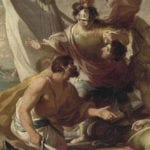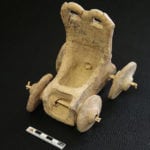 Weird Stuff
Weird Stuff  Weird Stuff
Weird Stuff  Animals
Animals 10 Inspiring Tales of Horses Being Human
 Mysteries
Mysteries Top 10 Haunting Facts About the Ghost Ship MV Alta
 History
History 10 Surprising Stories About the Texas Rangers
 Humans
Humans 10 Philosophers Who Were Driven Mad by Their Own Theories
 Miscellaneous
Miscellaneous 10 Video-Game-Worthy Weapons and Armors from History
 Weird Stuff
Weird Stuff 10 Psychics Who Accurately Predicted Wartime Events
 The Arts
The Arts 10 Pieces of Art Inspired by a Broken Heart
 Health
Health 10 Science Fiction-Sounding New Medical Treatments
 History
History 10 Surprising Facts About the Father of Submarine Warfare
 Weird Stuff
Weird Stuff 10 Times Real Laws Were Based on Bizarre Hypotheticals
 Animals
Animals 10 Inspiring Tales of Horses Being Human
 Mysteries
Mysteries Top 10 Haunting Facts About the Ghost Ship MV Alta
Who's Behind Listverse?

Jamie Frater
Head Editor
Jamie founded Listverse due to an insatiable desire to share fascinating, obscure, and bizarre facts. He has been a guest speaker on numerous national radio and television stations and is a five time published author.
More About Us History
History 10 Surprising Stories About the Texas Rangers
 Humans
Humans 10 Philosophers Who Were Driven Mad by Their Own Theories
 Miscellaneous
Miscellaneous 10 Video-Game-Worthy Weapons and Armors from History
 Weird Stuff
Weird Stuff 10 Psychics Who Accurately Predicted Wartime Events
 The Arts
The Arts 10 Pieces of Art Inspired by a Broken Heart
 Health
Health 10 Science Fiction-Sounding New Medical Treatments
 History
History 10 Surprising Facts About the Father of Submarine Warfare
10 Amazing Stories From The Dynasty Of The Terra-Cotta Warriors
In 1974, a handful of impoverished Shaanxi farmers were digging a well when they stumbled across one of the most incredible archaeological finds in history: thousands of unique terra-cotta warriors standing guard over the tomb of China’s first emperor. The legendary Qin Shi Huang united the warring states of China and built the magnificent tomb—and the stories of his life are just as fascinating as you’d expect.
10Building The Tomb
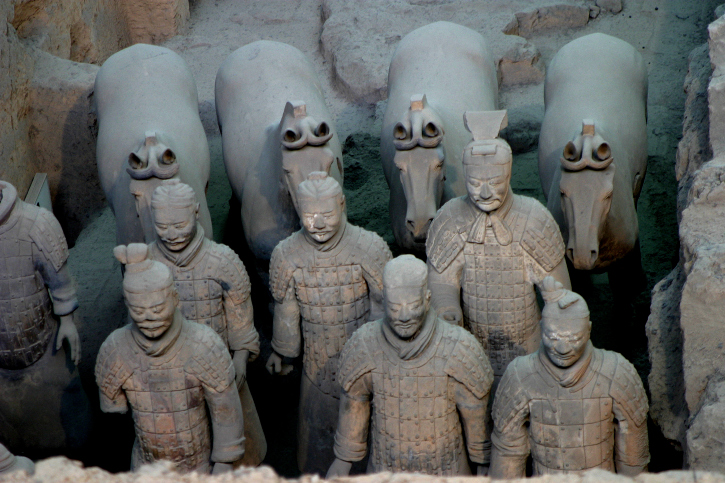
Most people are familiar with the terra-cotta warriors, each with their own unique features and armed with a variety of weapons. But the true scale of the tomb is almost impossible to comprehend, especially considering its construction began around 246 B.C.
The entire complex hasn’t even been excavated yet, but archaeologists believe it sprawls over 56 square kilometers (21 mi2) and includes around 600 individual sites. In addition to the terra-cotta soldiers, with their horses and chariots, there are sections of the tomb dedicated to less militaristic figures. There are terra-cotta government officials, terra-cotta musicians with their instruments, acrobats captured in mid-tumble, and even a section mimicking the emperor’s worldly court—complete with terra-cotta birds.
Work on the complex began when the future Qin Shi Huang rose to a princely throne at the age of 13. Craftsmen from across China were recruited for the massive project and as many as 720,000 laborers were drafted to build it.
While Qin Shi Huang’s own final resting place hasn’t been found yet, it’s rumored to be even more incredible than the rest of the complex. Legend claims it’s surrounded by deadly rivers of mercury. Worryingly, high levels of mercury have actually been found in the soil around the tomb complex. Not content with rivers of death, Qin Shi Huang’s successor ordered that many of the tomb’s craftsmen be sealed inside it, ensuring that the first emperor’s burial place would be shrouded in secrecy.
9The Dynasty Only Lasted 15 Years

When the Warring States period ended in 221 B.C., the victorious King Zheng of Qin renamed himself Shi Huangdi. Today, he’s usually referred to as Qin Shi Huang, or “First Qin Emperor.” But in spite of his massive achievement in unifying China, his dynasty only lasted 15 years. In other words, construction work on his tomb lasted longer than the Qin dynasty ruled China.
Qin Shi Huang died suddenly in 210 B.C., leaving almost nothing in place to dictate what should come after him. It was only on his deathbed that he declared his oldest son his heir, a decision that didn’t sit well with his closest advisers. Needing to keep the emperor’s death a secret while they maneuvered to get his second son into power, his advisers subsequently hid his body in a wagon of rotting fish, knowing that the smell would mask the scent of his corpse.
Spurred on by a string of natural disasters and the brutal Qin rule, the people revolted. Civil war ensued, and it wasn’t until 202 B.C. that the Han Dynasty would be established and life truly went on. Ironically, during his short reign Qin Shi Huang had dubbed his dynasty “the Empire of a Thousand Generations.”
8Rumors Of Illegitimacy
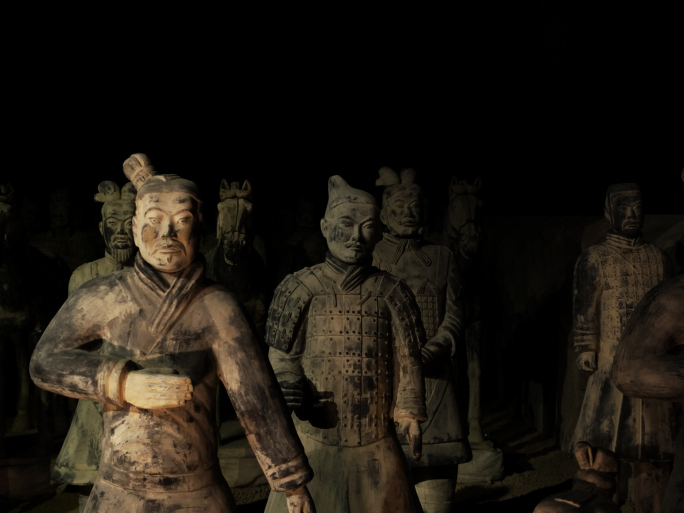
According to the official story, the man who would become Qin Shi Huang was the son of King Zhuangxiang and a concubine known as the Lady Zhao. After the death of the king, Lady Zhao took another lover, giving Qin Shi Huang the headache of two half-siblings. To make sure that neither ever challenged him, he had them both killed. For good measure, he also killed his mother’s lover and had his mother arrested.
Otherwise, not much is known about his early life or family, which may have helped the claims that he was actually illegitimate. Although the story is now considered doubtful, it comes from one of the definitive works of Chinese history, the Records of the Historian by Sima Qian. The author had inherited the position of court historian, choosing castration rather than death after angering a subsequent emperor.
After his castration, Sima Qian went on to complete his work, including the story of Qin Shi Huang’s true birth. Qin Shi Huang’s father, according to the story, was actually a man named Lu Buwei, who would go on to be one of his advisers. A wealthy merchant, one of Lu Buwei’s concubines had caught the eye of the king. Naturally, the merchant gave up the concubine—but she was already pregnant at the time. Lu Buwei knew this, taking solace in the fact that his son would one day inherit the kingdom.
7Mount Taishan
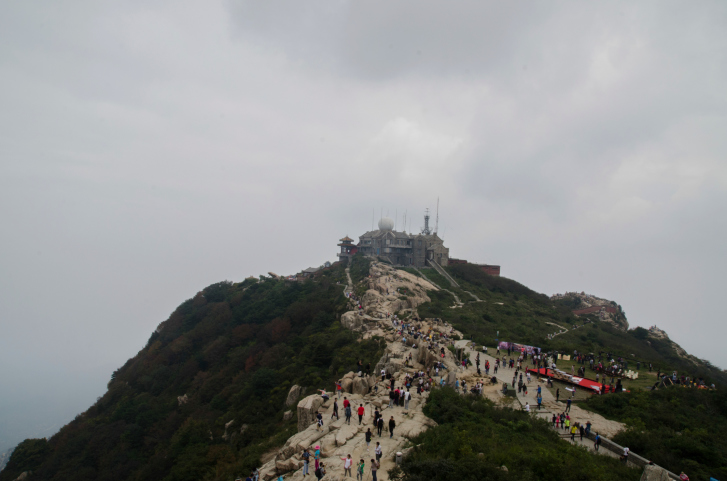
A UNESCO World Heritage site, Mount Taishan is one of the most culturally important places in China. The majestic mountain has been a sacred site since Neolithic times, and it was in part because of Qin Shi Huang that it continued to be so even after the unification of China.
Even today, the ruins of a massive rock wall can still be seen on the mountain, the last remnant of fortifications built by the State of Qin. After his victory, Qin Shi Huang himself scaled the mountain in order to pay homage for his victory. His pilgrimage began the practice of emperors climbing the mountain after coming to power, firmly establishing it as the cultural center of China. With its 6,600 stone steps, the mountain is host to centuries of historic artifacts, including 1,800 stone tablets and countless inscriptions.
Mount Taishan, and the four surrounding mountains later became known as the Five Sacred Mountains, representing the original unification of China.
6The Strange Birth Of Legalism
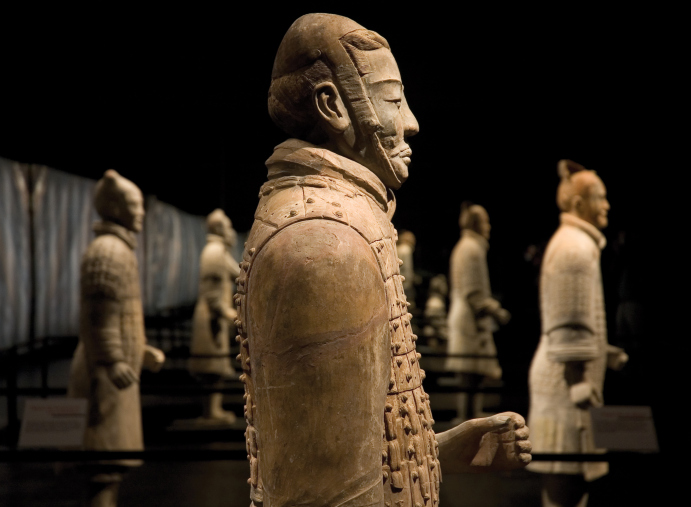
Qin Shi Huang ruled through the principle of legalism. Simply put, legalism dictates that people must earn what they get and pay the price for doing something wrong. Accomplishments lead to promotions and wealth, while making a mistake or breaking the law leads to punishment. Laws need to be clearly stated and public, and the only way to get ahead in life is by following the rules.
One of the most famous legalist reformers was Shang Yang, who first presented his theories to King Xiao of Qin. According to the story, the philosopher appeared before the king three times to impart his wisdom. On the first two occasions, the king fell asleep midway through the discussion. The third time, Shang Yang tried a different tack and talked about the use of military might to enforce the law. That got the king’s attention, and a fourth meeting for Shang Yang, where the details of legalism were hashed out.
In theory, some of the principles Shang Yang advocated don’t sound that bad. The old aristocracy was abolished, replaced with those loyal to the central government. The government itself was centralized, and merit was rewarded. Less popular was the division of the population into small family groups of 5 or 10, with the understanding that if one member did something wrong, the others needed to report it to the government or receive the designated punishment of being cut in half.
Ironically, Shang Yang ultimately found himself the victim of some aristocratic plotting and was sentenced to be torn apart by five chariots.
5The Original Great Wall
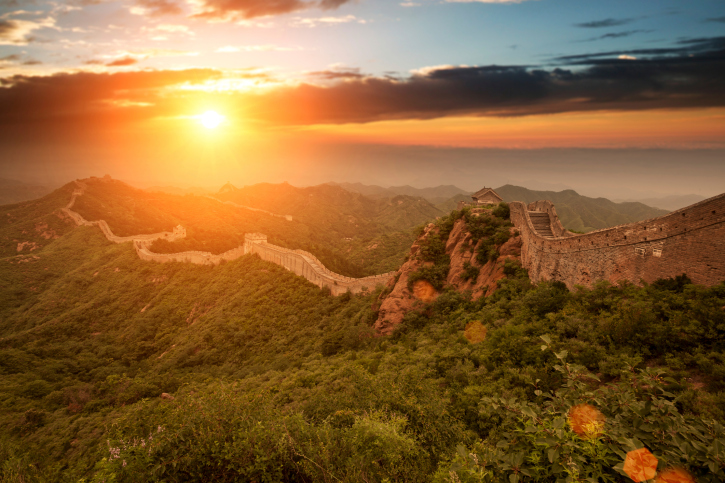
More than 20,000 kilometers (12,430 mi) long, the Great Wall of China is one of the most famous works of human engineering. But the wall we know today wasn’t the first of China’s great walls.
During the Warring States period, the Qin kingdom began building walls to protect their territory. Although massive, the early walls were a far cry from the modern stone structure. Instead, their builders used a method called earth-ramming. Soil was hauled to the building site, mixed with a binding agent, and then tightly packed. Once the soil dried, it formed the earliest iteration of the Great Wall of China.
In some places, the wall was up to 4.5 meters (15 ft) tall, making it an incredibly formidable obstacle for the time. Much like the later wall, the earth-rammed structure followed some pretty inhospitable terrain, meaning that any troops marching against the Qin would have to scale mountains and ridges as well as contending with the wall. Later, when Qin Shi Huang had a unified country to protect, he would begin joining the sections of wall, forming the oldest version of the wall we know today.
4The Dragon Boat Festival
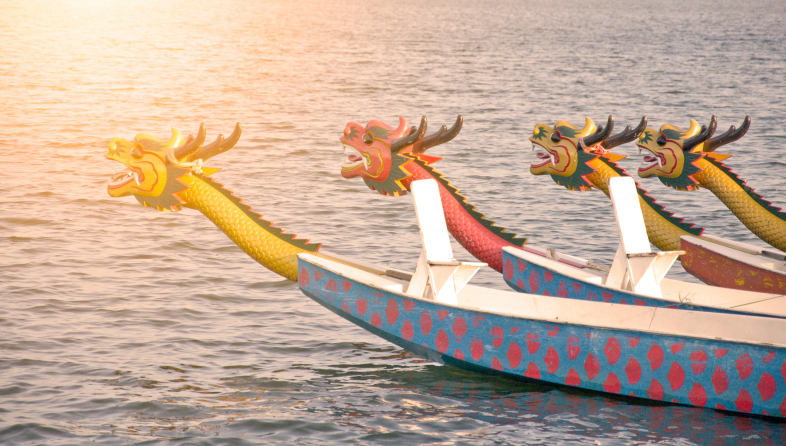
Still held today, the Dragon Boat Festival is an extremely ancient celebration with roots in the Warring States period (although some argue that the true roots of the festival go back even further). According to legend, the festival is held in the memory of a poet and philosopher named Qu Yuan. A high-ranking member of the court of the Chu State, Qu Yuan spoke out in favor of uniting with rival states in order to oppose the power of Qin. His temerity got him exiled from the court, but he continued to write, becoming one of the most influential poets of the era. It was said that when he heard that Chu had fallen to the Qin, he drowned himself in the Miluo River.
The legend claims that when word spread of the beloved poet’s fate, the people immediately took to the river to search for his body. Hence, a boat race is held every year on the anniversary of his death.
Along with the boat race, the festivities also include a type of dumpling called the zongzi, which also dates back to the poet. At the time, it was believed that only those whose physical bodies were intact would be allowed entrance to the afterlife. It’s said that while some searched for the poet’s body, others threw zongzi into the river in the hope that anything that might seek to devour his corpse would eat the dumplings instead.
3The Dazexiang Uprising
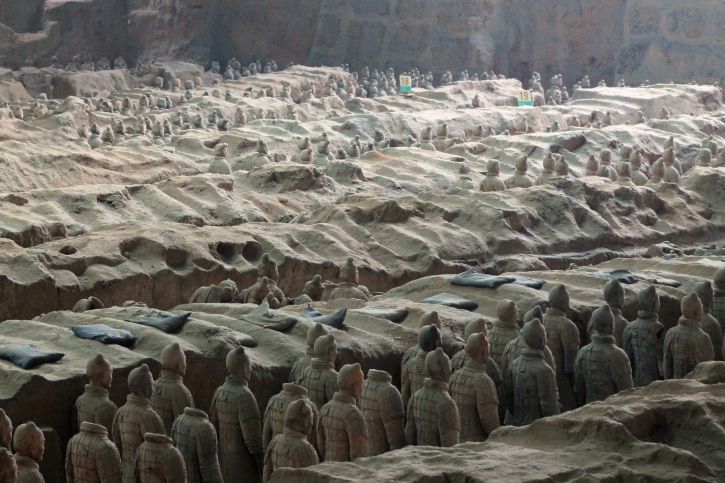
The rebellion against the Qin Dynasty started almost immediately after the death of Qin Shi Huang and the ascension of his son Hu Hai. While the legalist philosophy certainly had some benefits, like rewarding those who worked hard and putting experienced people in positions of power, it could also be incredibly cruel, with those who failed punished harshly, regardless of the circumstances.
Missing a deadline was considered breaking your word, and under Qin rule that meant being put to death. In 209 B.C. (about a year after Qin Shi Huang’s death), a group of 900 peasant soldiers were on their way from the Huaihe River area to what is now Beijing. Severe rains and floods held them up, and it wasn’t long before they realized that they weren’t going to make their deadline. Knowing that they faced certain execution, the peasants killed their officers and declared their own kingdom.
Two men—Chen Sheng and Wu Gang—took charge, sending their peasant army up against the mighty Qin forces. Naturally, they were soundly defeated and eventually murdered by their own forces. But other rebellions soon broke out, and the short-lived uprising marked the beginning of the end for the Qin Dynasty.
2The Burning Of Books And Burying Of Scholars
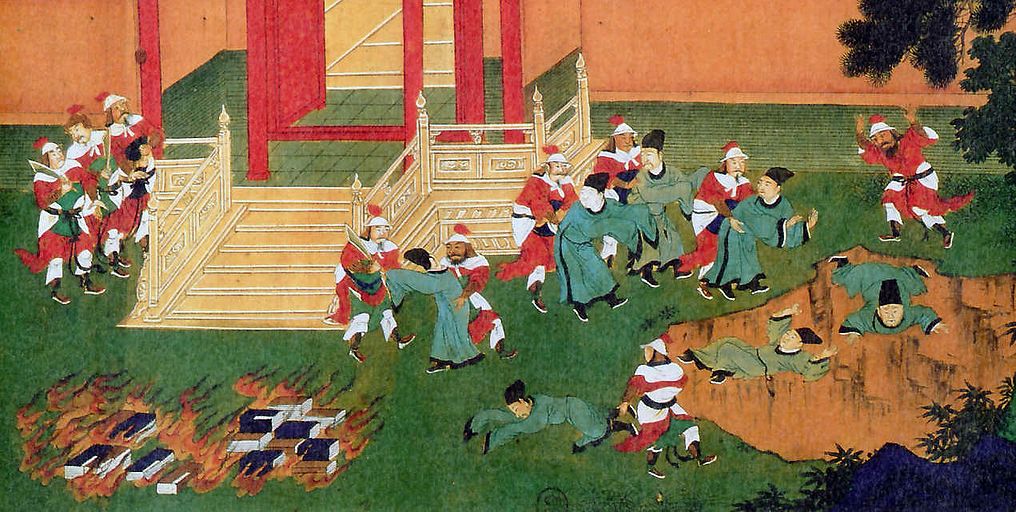
Aside from his incredible tomb, Qin Shi Huang is perhaps most famous for his burning of religious and historical texts and his order to bury alive 460 Confucian scholars. In 1958, Mao Zedong even referenced the notorious act, stating: “People always condemn Emperor Qin Shi Huang for burning books and burying alive Confucian scholars, and list these as his greatest crimes. I think, however, he killed too few Confucians.”
According to the story, Qin Shi Huang ordered that every work of pre–Qin Dynasty history be turned over to the authorities for destruction. It’s usually painted as a massive inquisition that resulted in the loss of pretty much all historical and cultural works predating the period. That’s probably something of an exaggeration, but there is some evidence that Qin Shi Huang ordered books to be burned to prevent scholars speaking “of the past in order to criticize the present.”
However, the burying of the scholars doesn’t appear in the historical record until hundreds of years later. Furthermore, it was recorded by Confucians, who had every reason to paint the legalist dynasty in a negative light. For this reason, the event is now viewed skeptically by historians, although it’s impossible to disprove entirely.
1The Warriors Might Have Been Real People
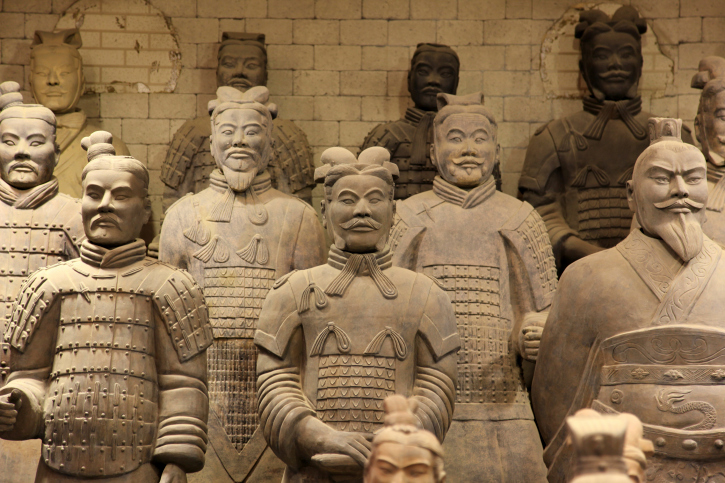
The thousands of terra-cotta warriors that have been excavated are all incredibly unique. They have different facial features, distinct details on their armor, and a variety of weapons. For a long time, it was thought that they were simply mass-produced in pieces, something that’s easy enough to do with terra-cotta. A handful of craftsmen would have been responsible for eyebrows, while another group would have been responsible for hats, and another group would have assembled all the individual pieces.
That would have been impressive enough on its own, but new research suggests that the statues were actually based on real people. The breakthrough came when University College London researchers realized that, much like our fingerprints, our ears are unique to us. So they looked at the construction of the auricular ridges on each statue.
And they’re all different.
The implications are staggering. As if the massive production line needed to complete the army wasn’t enough, it now appears that every statue was based on a real soldier alive at the time of Qin Shi Huang. So far, the researchers have only compared a relatively small number of ears, but the findings definitely warrant further study. If the ears continue to be unique, we might find we’re looking at the real features of an army that lived, breathed, and fought more than 2,000 years ago.
